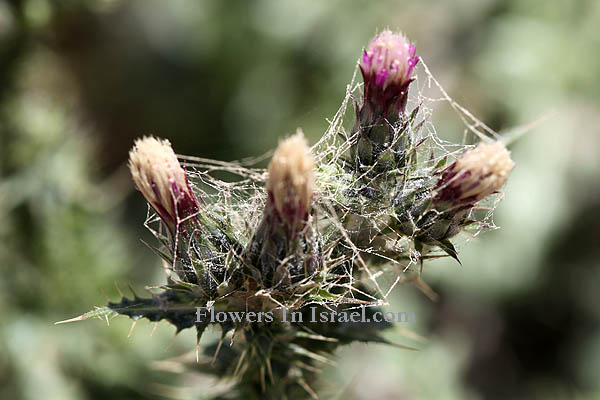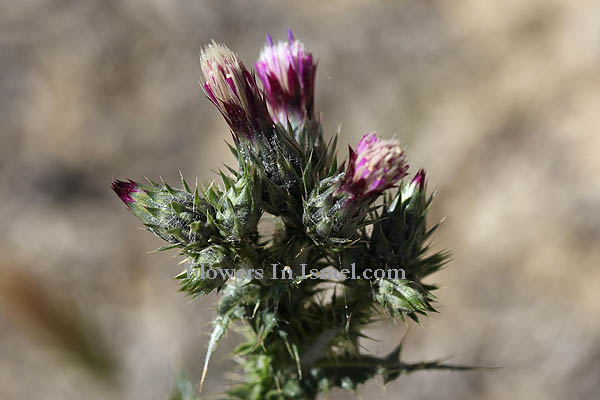Italian thistle,
Hebrew: קרדה דרומית, Arabic: لسان غليظ الرأس
| Scientific name: | Carduus australis L. | |
| Synonym name: | Carduus arabicus Jacq., Carduus pycnocephala L. | |
| Common name: | Italian thistle | |
| Hebrew name: | קרדה דרומית | |
| Arabic name: | لسان غليظ الرأس | |
| Plant Family: | Compositae / Asteraceae, מורכבים |

Location: Dudaim Forest, Goral Hills |
| Life form: | Therophyte, annual | |
| Spinescence: | Leaves, bracts | |
| Stems: | 20-200 cm, erect, branched particularly in upper half, grooved, winged except immediately below the flower heads, slightly downy or cobwebby | |
| Leaves: | Alternate, rosette, entire, dentate or serrate, spinescent | |
| Flowers: | Pink, purple, fragrant florets, formed in large solitary drooping heads at the ends of branches; heads often covered with cobwebby down | |
| Fruits / pods: | Cypselae ovoid, grey to yellowish brown, pappus of fine, toothed bristles 15-25 mm long | |
| Flowering Period: | March, April, May | |
| Habitat: | Shrub-steppes, Desert | |
| Distribution: | Mediterranean Woodlands and Shrublands, Semi-steppe shrublands, Shrub-steppes, Deserts and extreme deserts | |
| Chorotype: | Irano-Turanian | |
| Summer shedding: | Ephemeral |

Location: Dudaim Forest, Goral Hills Derivation of the botanical name: Carduus, thistle, the classical Latin name. australis, south, southern. arabicus, "Arabian". pycnocephala, Greek, pycnos, πυκνοϛ, close, dense, compact; -cephalus, headed; densely headed. The Hebrw name: קרדה, carda, from the scientific name.
|